2019
 S.P. Somtow’s novel The Other City of Angels (2008) portrays Bangkok as a Gothic metropolis: a city stuck between illusion and reality, where dreams and nightmares come to life, simultaneously backwards and modern, spiritual and material, and full of peculiarities that make one doubt whether such a place exists at all. It is a temple to consumerism filled with fortune tellers and high society serial killers that for Somtow, a composer himself, can best be expressed through the jarringly haunting sounds of Béla Bartók’s music. The Other City of Angels (2008) is a modern retelling of the Gothic tale of Bluebeard’s wife and her fatal discovery of her husband’s dark secret, and – true to its Gothic origins – it is filled with romance, terror, and laughter. This paper focuses on the novel’s comic dimension and discusses Somtow’s use of dark humour and the Gothic grotesque as a strategy to exoticize Bangkok for foreign readers by simultaneously reinforcing and defying Western stereotypes of Bangkok as the Oriental city, once (in)famously described as the city of temples and prostitutes. The paper also explores the way comic elements are used to offset the critical commentary on class division and social inequality that are seen as ingrained in the fabric of Thai culture and further aggravated by the materialism and consumerism characteristic of contemporary Thai society.
S.P. Somtow’s novel The Other City of Angels (2008) portrays Bangkok as a Gothic metropolis: a city stuck between illusion and reality, where dreams and nightmares come to life, simultaneously backwards and modern, spiritual and material, and full of peculiarities that make one doubt whether such a place exists at all. It is a temple to consumerism filled with fortune tellers and high society serial killers that for Somtow, a composer himself, can best be expressed through the jarringly haunting sounds of Béla Bartók’s music. The Other City of Angels (2008) is a modern retelling of the Gothic tale of Bluebeard’s wife and her fatal discovery of her husband’s dark secret, and – true to its Gothic origins – it is filled with romance, terror, and laughter. This paper focuses on the novel’s comic dimension and discusses Somtow’s use of dark humour and the Gothic grotesque as a strategy to exoticize Bangkok for foreign readers by simultaneously reinforcing and defying Western stereotypes of Bangkok as the Oriental city, once (in)famously described as the city of temples and prostitutes. The paper also explores the way comic elements are used to offset the critical commentary on class division and social inequality that are seen as ingrained in the fabric of Thai culture and further aggravated by the materialism and consumerism characteristic of contemporary Thai society.


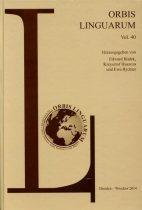
 This article argues that the negative portrayal of medical professionals in contemporary Thai horror is to a certain extent reminiscent of the tensions between the official and popular attitudes to Western bio-medicine and Traditional Thai Medicine (TTM) in Thai society. The article argues that medical doctors, together with other members of the professional community, such as for instance architects, or journalists, represent a relatively high level in the Thai social hierarchy which can be openly criticized without much fear that the films will be cut by censors. Last but not least, the article will look in more detail on Paween Purijitpanya’s debut feature The Body #19 (2006). Set within the less-than-glamorous world of medical professionals, the film toys with the concept of the mental disease (schizophrenia), which in traditional Thai folk medicine has consequently been attributed to spiritual possession. This dual spiritual/medical nature of the mental disease in Thai popular perception, has allowed the filmmakers to create a film that can be seen as simultaneously repeating and breaking the established Thai horror formulas. At the same time, while directing our attention to the notion of disease, the film offers an interesting, though subtle representation of the disintegration of the traditional hierarchical Thai society and its values.
This article argues that the negative portrayal of medical professionals in contemporary Thai horror is to a certain extent reminiscent of the tensions between the official and popular attitudes to Western bio-medicine and Traditional Thai Medicine (TTM) in Thai society. The article argues that medical doctors, together with other members of the professional community, such as for instance architects, or journalists, represent a relatively high level in the Thai social hierarchy which can be openly criticized without much fear that the films will be cut by censors. Last but not least, the article will look in more detail on Paween Purijitpanya’s debut feature The Body #19 (2006). Set within the less-than-glamorous world of medical professionals, the film toys with the concept of the mental disease (schizophrenia), which in traditional Thai folk medicine has consequently been attributed to spiritual possession. This dual spiritual/medical nature of the mental disease in Thai popular perception, has allowed the filmmakers to create a film that can be seen as simultaneously repeating and breaking the established Thai horror formulas. At the same time, while directing our attention to the notion of disease, the film offers an interesting, though subtle representation of the disintegration of the traditional hierarchical Thai society and its values.
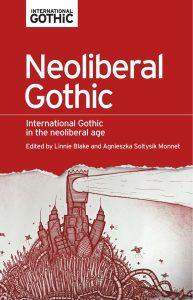 The article analyses the representation of organ harvesting and trade/trafficking in eight post-2000 Asian films. It discusses the films’ consistent portrayal of transplantation as dependant on criminal networks and activities, and their critique of neoliberal medicine as responsible for deepening the economic divisions within Asian societies. The article argues that regional organ trade operates in accordance with the same principles as the global one, allowing for an identification of donor and recipient zones specific to Asia and directing the local organ flows towards the economically privileged Asian countries, such as Japan, Taiwan or South Korea, three countries identified as major beneficiaries in the films. Last but not least, the essay offers a reading of the potentially gothic figures of vengeance appearing in the films (ghosts, resurrected neo-humans, victims-turned-abusers) in terms of a narrative strategy of resistance devised to empower the oppressed.
The article analyses the representation of organ harvesting and trade/trafficking in eight post-2000 Asian films. It discusses the films’ consistent portrayal of transplantation as dependant on criminal networks and activities, and their critique of neoliberal medicine as responsible for deepening the economic divisions within Asian societies. The article argues that regional organ trade operates in accordance with the same principles as the global one, allowing for an identification of donor and recipient zones specific to Asia and directing the local organ flows towards the economically privileged Asian countries, such as Japan, Taiwan or South Korea, three countries identified as major beneficiaries in the films. Last but not least, the essay offers a reading of the potentially gothic figures of vengeance appearing in the films (ghosts, resurrected neo-humans, victims-turned-abusers) in terms of a narrative strategy of resistance devised to empower the oppressed.
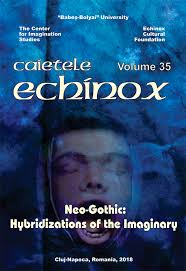 Contemporary Japanese crime writers frequently resort to gothic themes and conventions in their works. This is hardly surprising, since Japanese detective fiction, which dominated Japanese popular literature in the early twentieth century, began as a reaction to nineteenth-century gothic crime stories of writers such as Edgar Allan Poe or Arthur Conan Doyle. This article discusses crime novels of Otsuichi, Natsuo Kirino, and Fuminori Nakamura as examples of Japanese crime gothic, focusing on the Japanese conceptualisation of monstrosity in relation to the figure of the criminal, complementarity of the victim and killer characters, and aestheticisation of violence in the context of Japanese aesthetics of impermanence and imperfection.
Contemporary Japanese crime writers frequently resort to gothic themes and conventions in their works. This is hardly surprising, since Japanese detective fiction, which dominated Japanese popular literature in the early twentieth century, began as a reaction to nineteenth-century gothic crime stories of writers such as Edgar Allan Poe or Arthur Conan Doyle. This article discusses crime novels of Otsuichi, Natsuo Kirino, and Fuminori Nakamura as examples of Japanese crime gothic, focusing on the Japanese conceptualisation of monstrosity in relation to the figure of the criminal, complementarity of the victim and killer characters, and aestheticisation of violence in the context of Japanese aesthetics of impermanence and imperfection.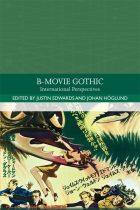
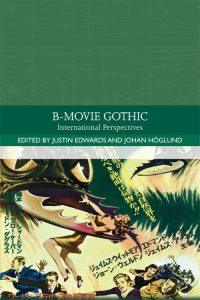 Category III films, introduced to Hong Kong audiences in 1988 as part of the new ratings system, were originally defined as productions reserved for adults over age eighteen. With the majority of plots focusing on stories of murder and sexual exploitation they were often dismissed as mindless low-budget gore-porn created solely for the purpose of generating quick profit for the producers and distributors. Such criticism did little to affect the films’ ratings, as the productions often met with favourable audience reviews and launched mainstream careers of some of their stars. The films also attracted limited academic attention, praised for their naturalistic rendering of the harsh social realities of the lower class life in the 1990s Hong Kong.
Category III films, introduced to Hong Kong audiences in 1988 as part of the new ratings system, were originally defined as productions reserved for adults over age eighteen. With the majority of plots focusing on stories of murder and sexual exploitation they were often dismissed as mindless low-budget gore-porn created solely for the purpose of generating quick profit for the producers and distributors. Such criticism did little to affect the films’ ratings, as the productions often met with favourable audience reviews and launched mainstream careers of some of their stars. The films also attracted limited academic attention, praised for their naturalistic rendering of the harsh social realities of the lower class life in the 1990s Hong Kong.